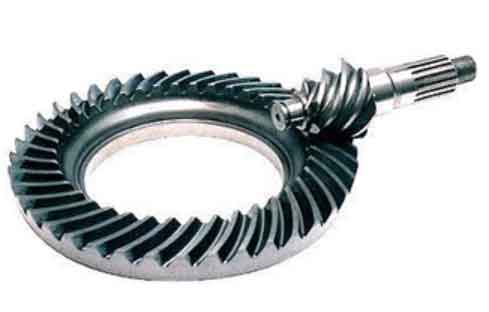Hypoid gears are a type of spiral bevel gears that are widely used in various industries, including automotive, aerospace, and industrial applications. They offer several advantages over other gear types, such as higher torque capacity, smoother operation, and improved efficiency. In recent years, there have been several notable developments in hypoid gear technology aimed at enhancing their performance and durability. Let’s explore some of the latest advancements in this field:

1.Advanced Manufacturing Techniques:
The development of advanced manufacturing techniques has significantly improved the precision and quality of hypoid gears. Computer Numerical Control (CNC) machining, 3D printing, and high-precision grinding processes allow for the creation of complex gear geometries with tight tolerances, resulting in enhanced gear performance.
2.Surface Treatment and Coatings:
The application of advanced surface treatments and coatings has improved the wear resistance and durability of hypoid gears. Techniques like carburizing, nitriding, and shot peening are used to harden the gear surfaces, reducing friction and enhancing their load-carrying capacity. Additionally, the use of specialized coatings, such as diamond-like carbon (DLC) coatings, further improves the gear’s surface hardness and reduces friction losses.
3.Material Innovations:
The development of new materials has played a crucial role in enhancing the performance of hypoid gears. Advanced alloys, such as high-strength steels and powdered metals, offer improved strength, fatigue resistance, and heat dissipation properties. Additionally, composite materials, such as carbon fiber-reinforced polymers, are being explored for lightweight gear applications, which can help reduce energy consumption and increase efficiency.
4.Gear Design Optimization:
Computer-aided design (CAD) and computer-aided engineering (CAE) tools have enabled designers to optimize the geometry and tooth profiles of hypoid gears. Advanced simulation techniques, such as finite element analysis (FEA), allow for accurate predictions of gear performance under various operating conditions. This optimization process helps improve gear efficiency, minimize noise and vibration, and increase overall reliability.
5.Lubrication and Cooling Systems:
Effective lubrication is essential for the smooth operation and longevity of hypoid gears. New lubricants with improved thermal stability, load-carrying capacity, and anti-wear properties are being developed to ensure optimal gear performance. Additionally, advanced cooling systems, such as oil jet or spray cooling, help dissipate heat generated during operation, preventing excessive temperature rise and improving gear efficiency.
6.Noise and Vibration Reduction:
Hypoid gears have traditionally been associated with higher noise levels compared to other gear types. However, recent advancements in gear design, manufacturing techniques, and surface treatments have focused on reducing noise and vibration levels. Precision machining, gear tooth modifications, and the use of noise-damping materials help minimize gear noise, making them more suitable for applications where quiet operation is essential.
These advancements in hypoid gear technology have led to improved performance, durability, and efficiency, making them a preferred choice in various industries. The ongoing research and development in this field continue to push the boundaries, ensuring further enhancements in gear design, manufacturing processes, and material selection for even better gear performance in the future.
